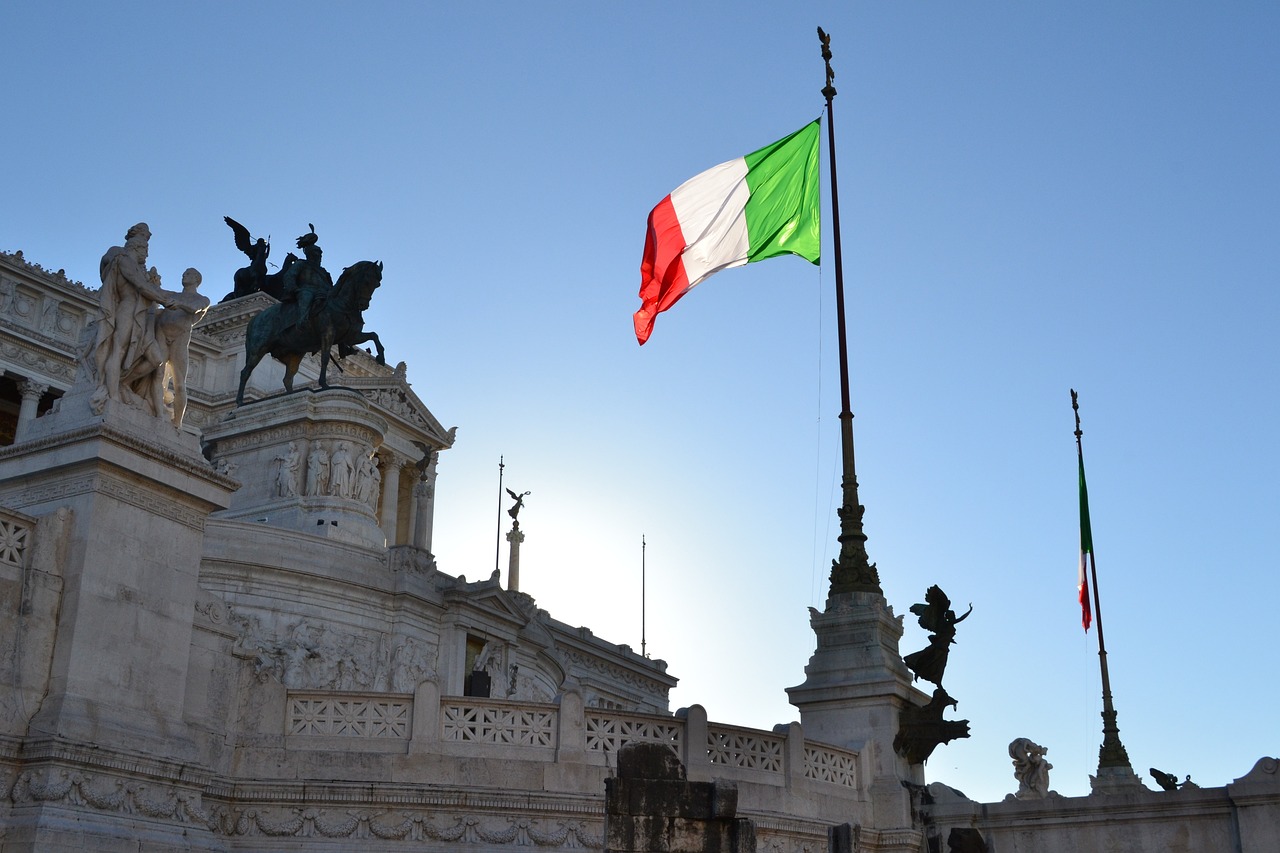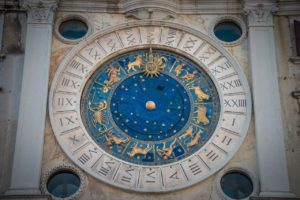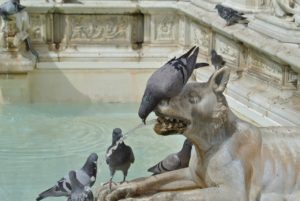Italian Adjectives for Beginners
In this post we’re going to cover the basics of Italian adjectives. First, we’ll define and give plenty of examples of common Italian adjectives. Then we’ll cover the grammar that you need to know to use Italian adjectives. That means that we’ll talk about adjective agreement, and the forms that different types of adjectives take when you use them to describe nouns. Next, we’ll see some adjectives that don’t quite fit the regular patterns. After that, we’ll touch on the placement of Italian adjectives and how this can affect meaning. Finally, we’ll wrap it all up with a final exercise that brings everything together.
What is an Adjective
First, let’s look at what adjectives are, and let’s see several examples in Italian. Adjectives are descriptive words. They describe (or modify if you like grammatical terminology) nouns and pronouns. That means that they provide information about qualities such as color, size, shape, emotion, value, nationality, and so on. Let’s start with a bunch of examples of basic Italian adjectives.
- Color
rosso (red), bianco (white), nero (black), blu (blue), giallo (yellow), verde (green), marrone (brown), grigio (gray) - Size
grande (big), piccolo (small), medio (medium), enorme (enormous), minuscolo (tiny) - Shape and other physical characteristics
alto (tall, high), basso (short, low), lungo (long), corto (short), grasso (fat), magro (thin), spesso (thick), sottile (thin), largo (wide), stretto (narrow), rotondo (round), piatto (flat), affilato (sharp), forte (strong), debole (weak), bello (beautiful), brutto (ugly), giovane (young), vecchio (old) - Emotion or personality
contento/contenta, felice (happy), triste (sad), intelligente (intelligent), folle (foolish), interessante (interesting), popolare (popular), sportivo (athletic, sporty), pigro (lazy), coraggioso (brave), timido (shy), simpatico (friendly), antipatico (unfriendly) - Value
buono (good), cattivo (bad), nuovo (new), vecchio (old), costoso (expensive), economico (inexpensive) - Nationality
italiano (Italian), francese (French), cinese (Chinese), americano (American), messicano (Mexican), canadese (Canadian), giapponese (Japanese)
These are of course just a few examples of Italian adjectives. There are many more, and when you look them up online or in a dictionary, you’ll see the forms above. But as we’re about to see, these are not the only forms that Italian adjectives take.
Using Italian Adjectives: Agreement
Next let’s get into using adjectives. As you know, every noun in Italian has grammatical gender, either masculine or feminine, and number, singular or plural. When you use an Italian adjective, it has to agree in both gender and number with the noun or pronoun it’s describing. This is done by changing the ending. Take a look at these forms of the adjective italiano (Italian).
| singular | plural | |
| masculine | l’uomo italiano (the Italian man) | gli uomini italiani (the Italian men) |
| feminine | la donna italiana (the Italian woman) | le donne italiane (the Italian women) |
As you can see, the form of the adjective changes depending on whether the noun (or pronoun) it’s describing is masculine, feminine, singular, or plural.
Four-Form Agreement
If the basic (dictionary) form of an adjective ends in –o (rosso red, piccolo small, alto tall, vecchio old), it will have four different endings: –o in the masculine singular, –a in the feminine singular, –i in the masculine plural, and –e in the feminine plural. Let’s see some examples.
| masculine sing. | feminine sing. | masculine pl. | feminine pl. | |
| red | rosso | rossa | rossi | rosse |
| small | piccolo | piccola | piccoli | piccole |
| tall | alto | alta | alti | alte |
If the adjective ends in –co (bianco) or –go (lungo) in the masculine singular, the ending changes to ch– and gh– before –i or –e to preserve the hard pronunciation. If the adjective ends in –io (vecchio) in the masculine singular, there is just one –i in the masculine plural.
| masculine sing. | feminine sing. | masculine pl. | feminine pl. | |
| white | bianco | bianca | bianchi | bianche |
| long | lungo | lunga | lunghi | lunghe |
| old | vecchio | vecchia | vecchi | vecchie |
Example Sentences
Take a look at the following examples with adjectives. See if you can identify the adjectives and determine why they have the endings that they have.
- In classe ci sono ragazze alte e ragazzi bassi.
There are tall girls and short boys in the class. - Abbiamo un grosso gatto nero.
We have a fat black cat. - Ti piacciono i vini italiani?
Do you like Italian wines? - Nel nord Italia ci sono montagne alte.
In the north of Italy there are high mountains. - A volte le auto vecchie sono economiche.
Sometimes old cars are cheap.
Two-Form Agreement
Now let’s turn to adjectives that only have two forms. If you look back at our list of common adjectives above, you’ll see that several end in –e: verde (green), grande (big), forte (strong), giovane (young). If the basic (masculine singular) form of an adjective ends in –e, it only has two forms: –e in the singular and –i in the plural.
| masculine sing. | feminine sing. | masculine pl. | feminine pl. | |
| green | verde | verde | verdi | verdi |
| sad | triste | triste | tristi | tristi |
Example Sentences
Now let’s see some examples of two-form adjectives. Again, see if you can identify the adjectives and determine why they have the endings that they have.
- Gli studenti sono intelligenti.
The students are intelligent. - Mi piace il maglione verde.
I like the green sweater. - Lui è triste, ma noi siamo felici.
He is sad, but we are happy. - I suoi libri sono molto interessanti e anche popolari.
Her books are very interesting, and also popular.
Invariable Adjectives
Next, we’ll look at a few adjectives that do not change form. These are known as invariable adjectives, and they only have one form. These adjectives include certain colors, for example blu (blue), rosa (pink), viola (purple). Colors that are made from a basic color and a noun also fall into this category, for example verde bottiglia (bottle green), rosso ciliegia (cherry red). Even though these compounds have the variable adjectives verde and rosso, those forms don’t change when they’re modified by the nouns bottiglia and ciliegia.
- Hanno due auto blu.
They have two blue cars. - Cosa c’è in quelle scatole rosa?
What’s in those pink boxes? - Ti piacciono i maglioni rosso ciliegia?
Do you like the cherry red sweaters?
Other adjectives that fall into the category of invariable are borrowings from other languages: cool, chic, snob, smart, pop, punk, beige, kitsch.
- Non mi piacciono i tuoi amici snob.
I don’t like your snobbish friends. - Marta ascolta sempre musica pop.
Marta always listens to pop music. - Quelle scarpe sono molto chic!
Those shoes are very chic!
Some Italian adjectives are compounds of verbs and nouns, similar to breathtaking in English. In Italian, breathtaking is formed from mozzare (to cut off) and fiato (breath) and the compound mozzafiato is invariable. Other examples are rompiscatole (annoying, pain-in-the-neck), from rompere (to break) and scatole (boxes), testadura (stubborn, hardheaded) from testa (head) and dura (hard), attaccabrighe (troublemaking) from attacca (start up, attack) and brighe (trouble), and rompipalle (ball-breaking) from rompere (to break) and palle (balls).
- L’hotel offre viste mozzafiato.
The hotel offers breathtaking views. - I miei fratelli rompiscatole mi stanno di nuovo dando fastidio.
My pain-in-the-neck brothers are bothering me again.
Irregular Italian Adjectives
Next let’s look at a few irregular adjectives. The adjectives bello (beautiful) and buono (good) follow the regular rules when they come after the adjective, for example in sentences with essere:
- Questi libri sono buoni.
These books are good. - Le tue foto sono belle.
You photos are beautiful.
But when these adjectives come before the noun, they take different forms. (If you think about the greeting buongiorno, you already know this. Buon is the form used before a noun, not buono.)
Buono
First let’s look at buono. After the noun, you have the four regular forms buono, buona, buoni, buone. But before the noun you have forms that look like the indefinite article (un, uno, una, un’) in the singular, and regular forms for the plural.
| before masculine nouns beginning in anything other than s + consonant, z, gn, or pn | un amico (a friend) un libro (a book) | un buon amico (a good friend) un buon libro (a good book) |
| before masculine nouns beginning in s + consonant, z, gn, or pn | uno stato (a state) uno zaino (a backpack) | un buono stato (a good state) un buono zaino (a good backpack) |
| masculine plural | — | buoni amici (good friends) buoni stati (good states) |
| feminine before consonants | una giornata (a day) una pasta (a pasta) | una buona giornata (a good day) una buona pasta (a good pasta) |
| feminine before vowels | un’amica (a friend) un’idea (an idea) | una buon’amica (a good friend) una buon’idea (a good idea) |
| feminine plural | — | buone amiche (good friends) buone giornate (good days) |
Sometimes, Italian speakers don’t quite adhere to these rules, so you may hear things like un buon zio (a good uncle) instead of un buono zio, which can sound hypercorrect in some circumstances.
Bello
Next let’s turn to bello. After the noun, you have the regular forms bello, bella, belli, belle. Before the noun, the forms of bello look a lot like the forms of the definite article (il, lo, l’, i, gli, la, le):
| masculine singular nouns beginning with most consonants | il libro (the book) il paesaggio (the landscape) | un bel libro (a beautiful book) un bel paesaggio (a beautiful landscape) |
| masculine singular nouns beginning with s + consonant, z, gn, ps | lo specchio (the mirror) lo zaino (the backpack) | un bello specchio (a beautiful mirror) il bello zaino (the beautiful backpack) |
| masculine singular nouns beginning with vowels | l’uomo (the man) l’albero (the tree) | il bell’uomo (the beautiful man) un bell’albero (a beautiful tree) |
| masculine plural beginning with most consonants | i libri (the books) i paesi (the countries) | i bei libri (the beautiful books) i bei paesi (the beautiful countries) |
| masculine plural nouns beginning with vowels, s + consonant, z, gn, ps | gli uomini (the men) gli specchi (the mirrors) | i begli uomini (the beautiful men) i begli specchi (the beautiful mirrors) |
| feminine singular nouns beginning with consonants | la donna (the woman) la città (the city) | una bella donna (a beautiful woman) una bella città (a beautiful city) |
| feminine singular nouns beginning with vowels | l’amica (the friend) l’arancia (the orange) | una bell’amica (a beautiful friend) la bell’arancia (the beautiful orange) |
| feminine plural nouns | le chiese (the churches) le case (the houses) | le belle chiese (the beautiful churches) le belle case (the beautiful houses) |
Grande and Santo
Now let’s look at grande (big) and santo (holy, Saint). Both adjectives have shortened forms gran and san when they’re used before masculine singular nouns that do not begin with a vowel or s + consonant, z, ps, or gn.
- Vivono in un gran palazzo.
They live in a big/grand palace. - Causa un gran numero di problemi.It causes a large number of problems.
- La Basilica di San Pietro si trova a Roma.
Saint Peter’s Basilica is located in Rome.
Placement of Italian Adjectives
Next let’s look at the placement of adjectives in Italian. Usually, adjectives follow the noun they describe in Italian, opposite to English.
- È uno zoo fantastico.
This is a fantastic zoo. - Hai degli amici molto interessanti.
You have some very interesting friends. - Ho bisogno di uno zaino grande.
I need a big backpack. - Voglio vivere in una casa grande.
I want to live in a big house.
Some common adjectives can come before the noun, and this gives them more of a metaphorical or less literal meaning. The ones that typically do this are:
| adjective | meaning after noun | meaning before noun |
| grande | big, large | great |
| vecchio | old (as in age) | old (as in for a long time) |
| buono | good | good, qualified, experienced |
| nuovo | new | new, additional, extra |
| povero | poor (lacking money) | poor, unfortunate, pitiable |
| caro | expensive, dear (in cost) | dear, beloved |
Take a look at these pairs.
- È un uomo grande. È un gran uomo.
He’s a big man. He’s a great man. - Sono persone povere. Sono povere persone.
They’re poor people. They’re unfortunate people. - Ho una macchina nuova. Ho una nuova macchina.
I have a (brand) new car. I have a different/additional car.
Practice
Finally, let’s practice using Italian adjectives. Give the correct form of the adjective in parentheses, and translate the complete sentence. Answers are given below.
- La donna è _____. (alto)
- Le donne sono _____. (alto)
- L’uomo è_____. (basso)
- Gli uomini sono _____. (basso)
- Mio nonno è _____. (vecchio)
- Mia nonna è _____. (vecchio)
- I ragazzi sono _____. (giovane)
- Abbiamo una figlia _____. (piccolo)
- Le donne sono _____. (intelligente)
- Gli uomini sono _____ . (forte)
- Mia sorella è _____ . (simpatico)
- Mio fratello è _____. (amichevole)
- La ragazza è _____. (timido)
- Le nostre figlie sono _____. (timido)
- Il nostro insegnante è _____. (interessante)
- È una cantante _____. (popolare)
- L’ufficiale di polizia è _____. (coraggioso)
- I cane sono _____. (nero)
- Il gatto è _____. (bianco)
- Le nostre macchine sono _____. (blu)
- La bandiera italiana è _____, _____, e _____. (verde, bianco, rosso)
- È un _____ libro. (buono)
- Questi libri sono _____. (buono)
- È una _____ canzone. (buono)
- Queste canzoni sono _____. (buono)
- Il cantante è _____. (bravo)
- I film sono _____. (nuovo)
- La città è _____. (bello)
- Le strada sono _____. (largo)
- Il letto è troppo _____. (duro)
- Le bottiglie sono _____. (vuoto)
- È un _____ pittore. (grande)
- Voglio viaggiare in _____ paesi. (bello)
- Sono foto _____. (mozzafiato)
Get on the road to speaking Italian with the Language Garage!
We hope you’ve enjoyed learning about Italian adjectives. If you’d like to learn more:
- Follow us on Facebook, LinkedIn, BlueSky, Twitter, Threads, Instagram, or Pinterest. We publish lots of Italian vocabulary, grammar, and culture notes, so it’s a great way to pick up some new vocabulary and practice.
- Check out our other posts on Italian language, culture, and more.
- Enroll in affordable, flexible, and personalized private online Italian lessons or sign up for a small group online Italian class.
- Create a free Language Garage account to access tons of Italian vocabulary, grammar, and culture.
- Learn basic Italian with our self-study online Italian course.
Answers
- La donna è alta.
- Le donne sono alte.
- L’uomo è basso.
- Gli uomini sono bassi.
- Mio nonno è vecchio.
- Mia nonna è vecchia.
- I ragazzi sono giovani.
- Abbiamo una figlia piccola.
- Le donne sono intelligenti.
- Gli uomini sono forti.
- Mia sorella è simpatica.
- Mio fratello è amichevole.
- La ragazza è timida.
- Le nostre figlie sono timide.
- Il nostro insegnante è interessante.
- È una cantante popolare.
- L’ufficiale di polizia è coraggioso / coraggiosa. (ufficiale can be either m or f)
- I cane sono neri.
- Il gatto è bianco.
- Le nostre macchine sono blu.
- La bandiera italiana è verde, bianca, e rossa.
- È un buon libro.
- Questi libri sono buoni.
- È una buona canzone.
- Queste canzoni sono buone.
- Il cantante è bravo.
- I film sono nuovi.
- La città è bella.
- Le strada sono larghe.
- Il letto è troppo duro.
- Le bottiglie sono vuote.
- È un gran pittore.
- Voglio viaggiare in bei paesi.
- Sono foto mozzafiato.
Translations
- The woman is tall.
- The women are tall.
- The man is short.
- The men are short.
- My grandfather is old.
- My grandmother is old.
- The boys are young.
- We have a young (little) daughter.
- The women are intelligent.
- The men are strong.
- My sister is friendly.
- My brother is friendly.
- The girl is shy.
- Our daughters are shy.
- Our teacher is interesting.
- She’s a popular singer.
- The police officer is brave.
- The dog is black.
- The cat is white.
- Our cars are blue.
- The Italian flag is green, white, and red.
- It’s a good book.
- These books are good.
- It’s a good song.
- These songs are good/bad.
- The singer is good/talented.
- Thes film are new.
- The city is beautiful/big.
- The streets are wide.
- The bed is too hard.
- The bottles are empty.
- He’s a great painter.
- I want to travel in beautiful countries.
- They’re breathtaking photos.
Image by Julia Casado from Pixabay






